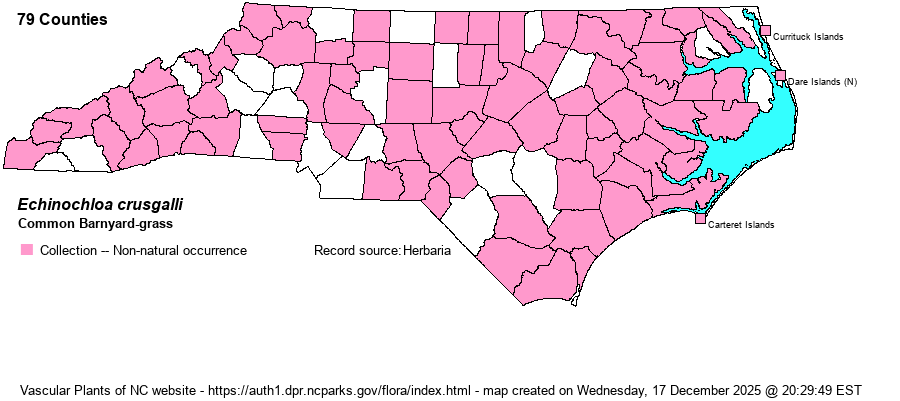| Author | (L.) Palisot de Beauvois | |
| Distribution | Throughout the state; no doubt in every county.
Native of Eurasia; in N.A. throughout the U.S. and southern Canada. | |
| Abundance | Common throughout. | |
| Habitat | Moist to wet or dry soils of roadsides, crop fields, pastures, meadows, waste areas, farm yards, etc. | |
| Phenology | Flowering and fruiting July-November. | |
| Identification | Common Barnyard-grass is familiar to most naturalists. The stems grow mostly 2-4 feet tall and may be erect or reclining. The inflorescence is composed of a number of strongly ascending branches, each bearing many spikelets -- forming a conical shape. The spikelets are ovoid and rapidly taper to a short sharp beak; they usually bear awns, but some forms do not. Panicle branches usually have hairs abruptly widened at the base (pustular). In the field, the native E. muricata looks very similar but it has pustular hairs on the second glume and sterile lemma (vs. glabrous or glabrate). | |
| Taxonomic Comments | The specific name is often written as crus-galli.
| |
| Other Common Name(s) | | |
| State Rank | SE * | |
| Global Rank | GNR | |
| State Status | | |
| US Status | | |
| USACE-agcp | | |
| USACE-emp | | |

